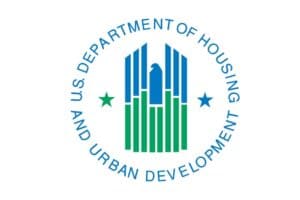Federal / Agency News

Senate Banking Committee Considers Todman’s Nomination
On Tuesday, the Senate Committee on Banking, Housing and Urban Affairs held a nomination hearing for Adrianne Todman to be Deputy Secretary at HUD.

HUD Offers Training on URA
HUD is offering an eight-part web-based modular training course for HUD grantees and funding recipients on Uniform Relocation Assistance and Real Property Acquisition (URA) Policies Act of 1970, as amended requirements for HUD funded projects. Module one provides an overview of the URA.

Guide Offers Strategies for Deploying ARP Funds
Developed by PolicyLink in partnership with community leaders, chief equity officers, policymakers, economic development practitioners, research and policy organizations and philanthropic partners, 10 Priorities for Advancing Racial Equity Through the American Rescue Plan (ARP): A Guide for City and County Policymakers suggests municipal strategies for deploying ARP funds equitably, efficiently and strategically.

NH&RA Joins Letter Supporting Todman Nomination
NH&RA joined a letter to the Senate Committee on Banking Housing and Urban Affairs supporting Adrianne Todman’s nomination to be Deputy Secretary at HUD. The letter was led by the ACTION Steering Committee and joined by 17 other federal housing organizations.

NH&RA Joins FY2022 FSS Funding Letter
NH&RA joined with 50 other organizations in a letter to congressional appropriators calling for increased Fiscal Year (FY) 2022 funding for the Family Self-Sufficiency (FSS) Program. Specifically, we ask for $150 million, an increase of $45 million over FY 2021. This increase would allow the program to serve an additional 45,000 households.

TRACS Forum Implementation – May 17, 2021
HUD’s Office of Multifamily Housing Programs (MFH) is re-establishing the Tenant Rental Assistance Certification System (TRACS) Forum to encourage information exchange between property owners and agents, contract administrators, state housing finance agencies, housing and community development researchers, academics, policymakers and affordable housing practitioners.

Mark Colón Nominated as CPD Assistant Secretary, Solomon Greene as PD&R Assistant Secretary
President Joe Biden sent the nominations of Mark Colón to be assistant secretary for Community Planning and Development (CPD) and Solomon Jeffrey Greene to be assistant secretary for Policy Development and Research (PD&R) within HUD to the Senate for consideration.

NYU Furman Center Says Rent Regulation, Subsidies Best for Stabilization
A policy brief, Rent Regulation for the 21st Century: Pairing Anti-Gouging with Targeted Subsidies, from the NYU Furman Center suggests pairing broad-based anti-gouging rent regulation paired with targeted subsidies as the best way to stabilize low-income renters while avoiding the drawbacks of strict, broad rent regulation and means-testing.

Bolstering the Housing Safety Net: The Promise of Automatic Stabilizers
A policy paper for the Brookings Institution’s Hamilton Project proposes a set of automatic stabilizers to federal housing programs to help renters and homeowners stay in their homes during economic downturns.

HUD to Resume Inspections June 1
HUD is prioritizing the inspection of high-risk properties (previous low inspection scores and/or have not had an inspection for a long period of time). Residents will have the ability to opt-out should they not wish to have an inspector enter their unit.

Green New Deal for Public Housing Reintroduced
The bill would provide $172 billion to retrofit existing housing through the creation of two new grant programs to achieve carbon neutrality in public housing through workforce development and construction.

Terner Center Report: The Complexity of Financing LIHTC Housing
The authors find that on average, developers need to pull together 3.5 different funding sources to make a development pencil, with some developments requiring as many as 11 sources on top of tax credit equity. The average number of sources has also increased over time, in line with the rise of development costs.